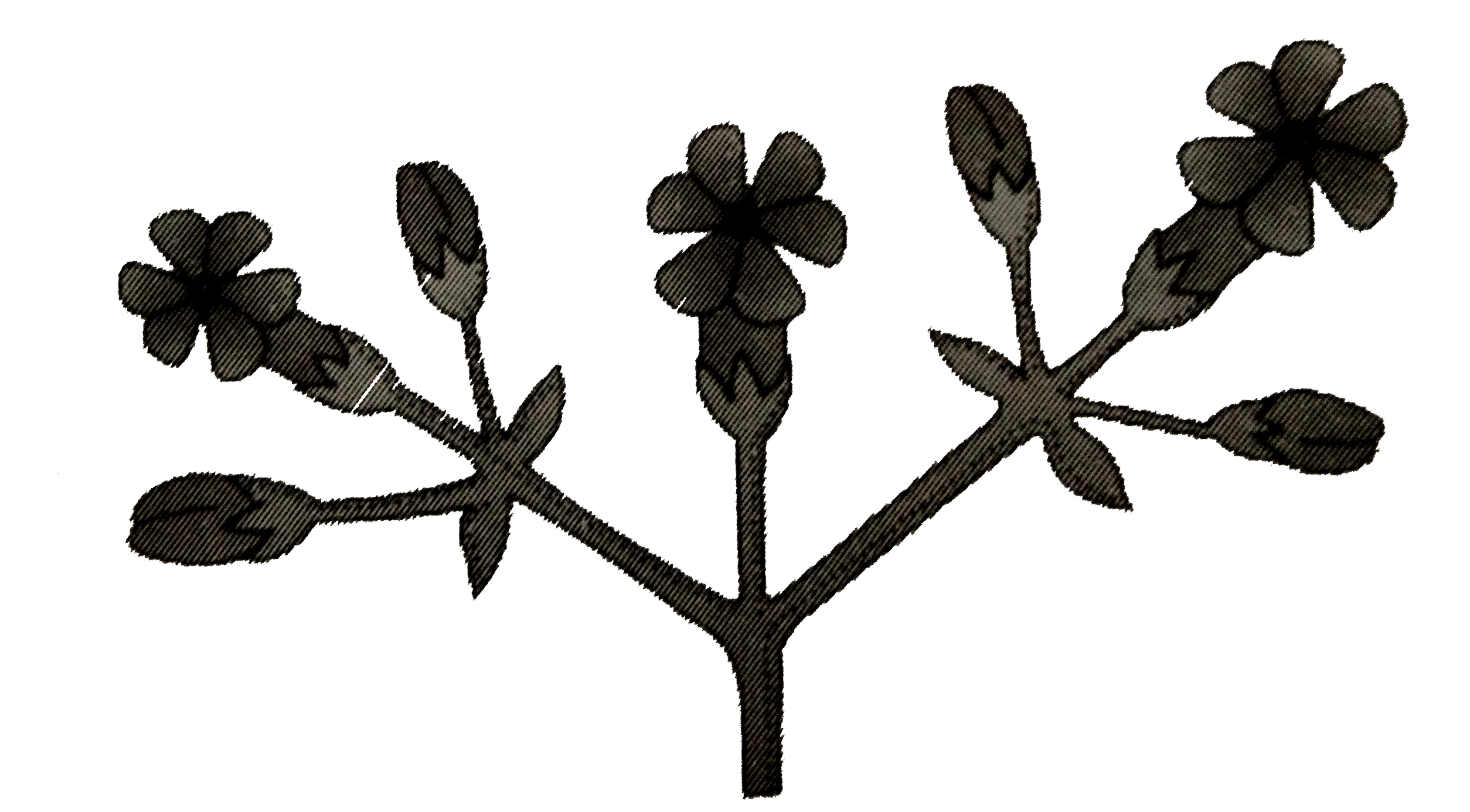The type of inflorescence which is not racemose but resembles a single flower is called :
capitulum
cyathium
verticillaster
multiparous cyme
The correct Answer is:B
To solve the question regarding the type of inflorescence that is not racemose but resembles a single flower, we can follow these steps:
1. Understand Inflorescence Types:
- Inflorescence is the arrangement of flowers on a plant. There are two main types: racemose and cymose.
- Racemose Inflorescence: In this type, the main axis continues to grow and produces flowers laterally. Examples include racemes and spikes.
- Cymose Inflorescence: In this type, the growth is limited, and the main axis terminates in a flower. Examples include cymes.
2. Identify the Characteristics of the Question:
- The question specifies that the inflorescence is not racemose but resembles a single flower. This means we are looking for a special type of inflorescence.
3. Examine the Options:
- A. Capitulum: This is a type of inflorescence where flowers are densely packed on a common receptacle, resembling a single flower (e.g., daisies).
- B. Scythium: This is a special type of inflorescence found in plants like Euphorbia. It resembles a single flower and has a unique structure.
- C. Verticillaster: This type has whorled arrangements of flowers, not resembling a single flower.
- D. Multiparastine: This is not a commonly recognized term in inflorescence types.
4. Determine the Correct Answer:
- The inflorescence that is not racemose and resembles a single flower is Scythium. It has a conical receptacle surrounded by an involucre of bracts and contains both male and female flowers.
5. Final Answer:
- The correct answer is B. Scythium.
- Inflorescence is the arrangement of flowers on a plant. There are two main types: racemose and cymose.
- Racemose Inflorescence: In this type, the main axis continues to grow and produces flowers laterally. Examples include racemes and spikes.
- Cymose Inflorescence: In this type, the growth is limited, and the main axis terminates in a flower. Examples include cymes.
- The question specifies that the inflorescence is not racemose but resembles a single flower. This means we are looking for a special type of inflorescence.
- A. Capitulum: This is a type of inflorescence where flowers are densely packed on a common receptacle, resembling a single flower (e.g., daisies).
- B. Scythium: This is a special type of inflorescence found in plants like Euphorbia. It resembles a single flower and has a unique structure.
- C. Verticillaster: This type has whorled arrangements of flowers, not resembling a single flower.
- D. Multiparastine: This is not a commonly recognized term in inflorescence types.
- The inflorescence that is not racemose and resembles a single flower is Scythium. It has a conical receptacle surrounded by an involucre of bracts and contains both male and female flowers.
- The correct answer is B. Scythium.
Topper's Solved these Questions
- BOOK - ICSECHAPTER - MORPHOLOGY OF FLOWERING PLANTS EXERCISE - Test Your Progress (Fill in the blanks with appropriate words)22videos
MORPHOLOGY OF FLOWERING PLANTS
- BOOK - ICSECHAPTER - MORPHOLOGY OF FLOWERING PLANTS EXERCISE - Test Your Progress (State whether the following statements are true or false )27videos
MORPHOLOGY OF FLOWERING PLANTS
- BOOK - ICSECHAPTER - MORPHOLOGY AND ANATOMY OF DIFFERENT SYSTEM OF COCKROACH EXERCISE - Long Answer type Questions6videos
MORPHOLOGY AND ANATOMY OF DIFFERENT SYSTEM OF COCKROACH
- BOOK - ICSECHAPTER - NEURAL CONTROL AND CO-ORDINATION EXERCISE - NCERT EXERCISES WITH ANSWER (DIFFERENTIATE BETWEEN)11videos
NEURAL CONTROL AND CO-ORDINATION
Similar Questions
Knowledge Check
- Question 1 - Select One
What type of inflorescence does the given figure show ?
 AUniparous cymeBBiparous cymeCMultiparousDRacemose
AUniparous cymeBBiparous cymeCMultiparousDRacemose
which type of inflorescence occurs in ficus
View SolutionThe most advanced type of inflorescence is
View SolutionInflorescence is racemose in
View SolutionCymose inflorescence differs from racemose inflorescence in
View SolutionThe type of inflorescence wherein the main axis has limited growth and ends in a flower is termed
View SolutionThe stalk of the inflorescence in onion is called
View SolutionUmbellate clusters type of inflorescence is present in
View Solution


